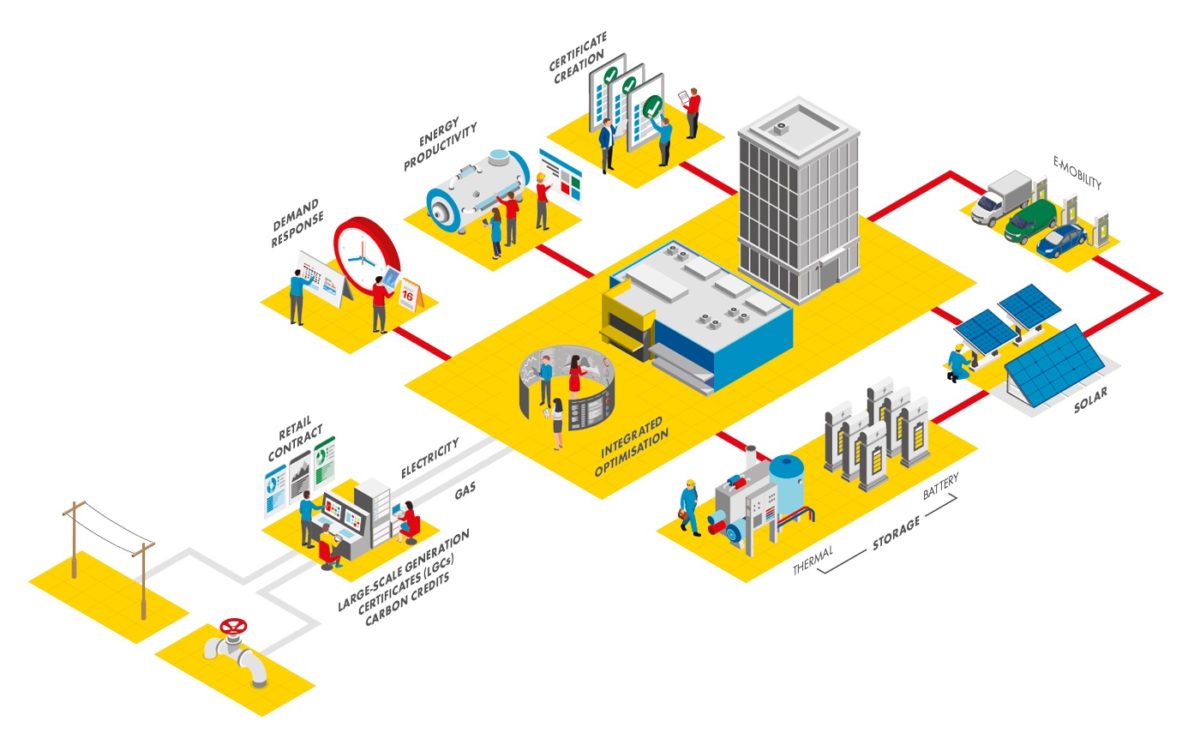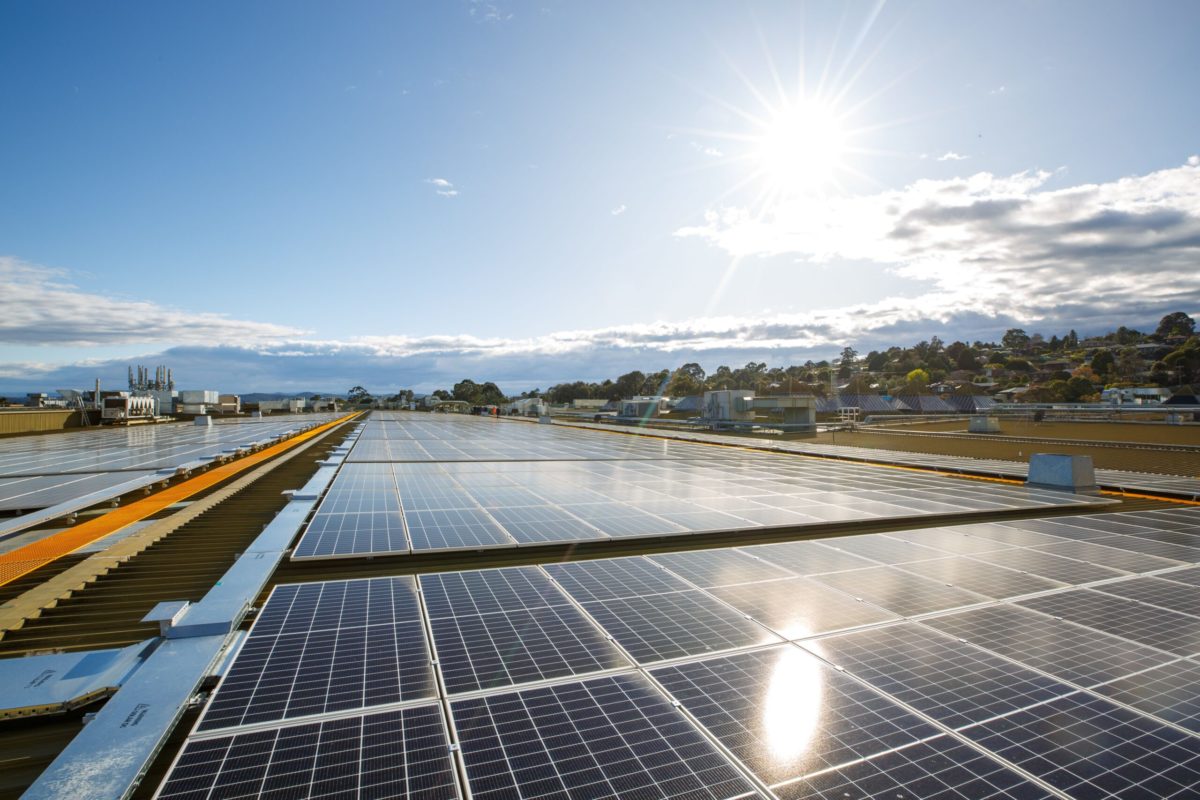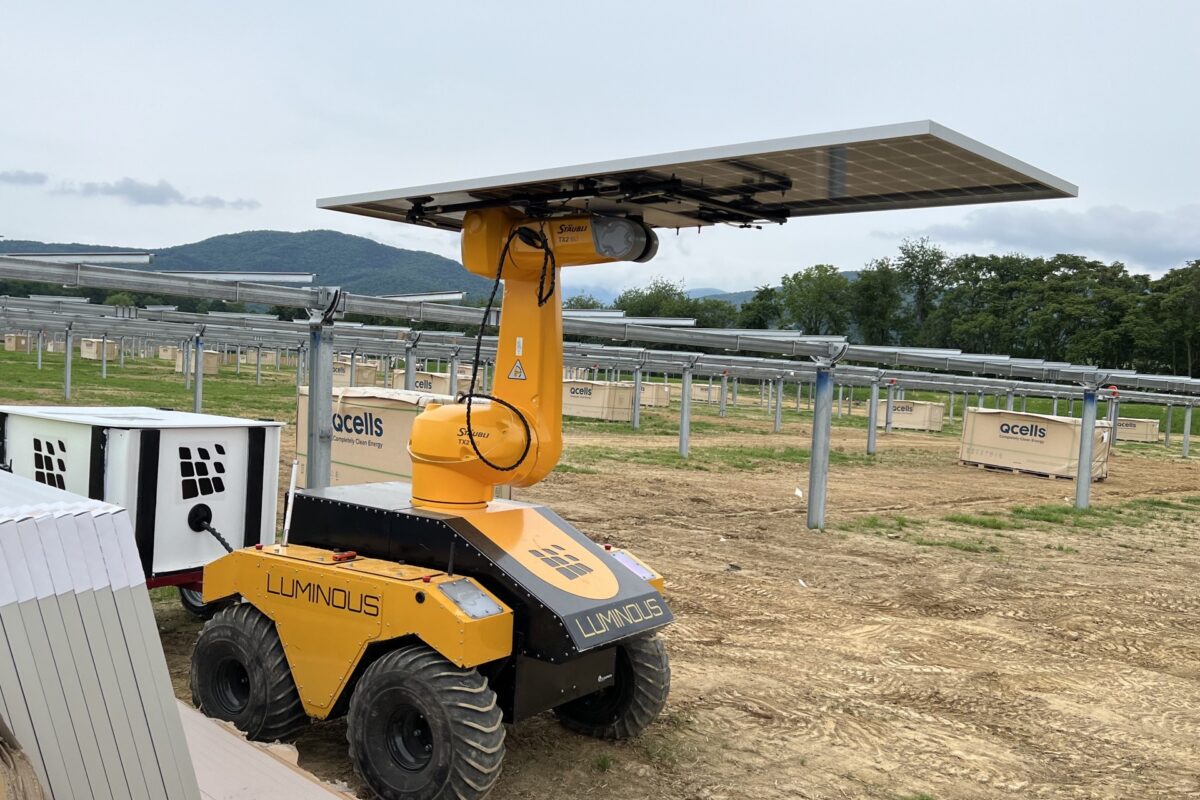Having demonstrated its capacity to technically pull off the project through a pilot launched earlier this year at the Chirnside Park Shopping Centre, Shell Energy Australia has been awarded $9.1 million (USD 5.7 million) from Australian Renewable Energy Agency to expand its energy load control program ‘Commercialising Smart Energy Hubs.’
The $31.6 million program effectively involves building a ‘whole-of-site solution’ to optimise everything from the customer’s heating, ventilation and air conditioning, refrigeration, as well as onsite solar, storage and electric vehicle charging.
With the funding, Shell will recruit at least 40 shopping centres, supermarkets as well as a refrigeration distribution centre from across Queensland, New South Wales and Victoria to demonstrate the potential from making these commercial sites more flexible and responsive in their energy use.

Image: Shell
This idea of simply using electricity more cleverly is an important and too-often overlooked component of decarbonisation. Known as flexible demand capacity, the concept basically involves load shifting – using more electricity in the middle of the day when the Australian grid is flooded with solar power – but through mechanisms capable of responding in real time to the network’s needs, market signals, and generation shortfalls.
Or, in other words, it involves using a combination of hardware and software to respond to the real situation on the grid and adjust the site’s energy use accordingly. This feat holds multiple benefits for both the grid and the customer – smoothing electricity demand and lowering customer costs by cutting both their use and the necessity of purchasing power when it is selling for premium in the evenings.
In terms of what is happening as part of Shell’s program, the company is aiming to directly unlock 417 MW of flexible demand and be a catalyst to realise 1 GW of commercial and industrial flexible demand capacity across the National Electricity Market by the end of 2025.
To arrive there, the project aims to resolve some of the commercial and regulatory barriers which continue to impede the scaling up of such integrated flexibility solutions. It plans to do this by “unlocking new revenue streams and exploring regulatory change with the Wholesale Demand Response Mechanism (WDRM), the Reliability and Emergency Reserve Trader (RERT) and state-based certificates such as the NSW Peak Demand Reduction Scheme (PDRS),” ARENA says.
Shell has been developing and testing its commercial product, known as LoadFlex, which underpins the project, since 2019. It has been deployed at its pilot project at the Chirnside Park Shopping Centre in Victoria where the mix of predictive software and the addition of a 2 MWh battery and 650 kW solar array has led to load reductions of up to 70% during peak times.
Flexible demand capacity
Supporting flexible demand projects is a key focus for ARENA – and is undoubtedly a crucial component for getting the transition to renewable energy right.
The huge amounts of solar being generated around midday in Australia have already begun destabilising the grid here. For instance, South Australia last year became the first gigawatt-scale grid in the world to reach zero demand, meaning the generation from distributed assets like solar outstripped the local load – a phenomenon which has the potential to cause massive instability.

If done effectively though, flexible demand can be an antidote to this problem while also drastically cutting down the heavy power use of commercial and industrial sites.
“For commercial and industrial sites, flexible demand is a potential alternative to costly upgrades to network infrastructure or building large-scale batteries. To achieve the full potential of flexible demand, we will require new innovation, technologies and market processes,” ARENA CEO Darren Miller said.
“Shell Energy’s initiative represents ARENA’s first C&I project to demonstrate a whole of site optimisation of energy demand management for delivery of market, ancillary and customer benefits through the control of energy load.”
This content is protected by copyright and may not be reused. If you want to cooperate with us and would like to reuse some of our content, please contact: editors@pv-magazine.com.









By submitting this form you agree to pv magazine using your data for the purposes of publishing your comment.
Your personal data will only be disclosed or otherwise transmitted to third parties for the purposes of spam filtering or if this is necessary for technical maintenance of the website. Any other transfer to third parties will not take place unless this is justified on the basis of applicable data protection regulations or if pv magazine is legally obliged to do so.
You may revoke this consent at any time with effect for the future, in which case your personal data will be deleted immediately. Otherwise, your data will be deleted if pv magazine has processed your request or the purpose of data storage is fulfilled.
Further information on data privacy can be found in our Data Protection Policy.